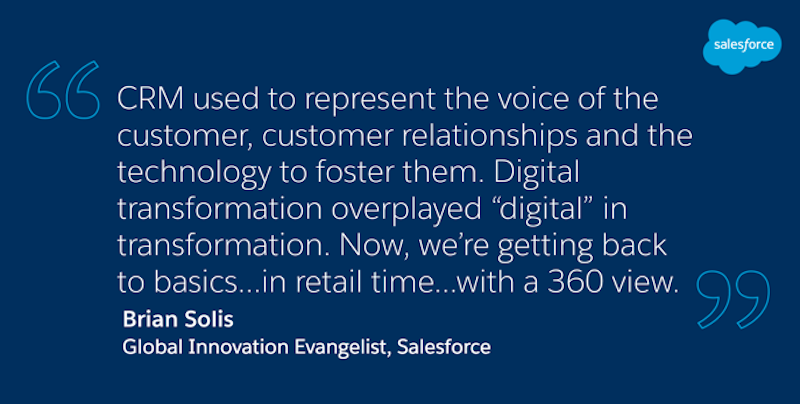At the heart of CRM is the word relationships. But when it comes to digital transformation (DX), many organizations often placed too great an emphasis on the digital side of change. According to MuleSoft in 2018, four out of five businesses reported that failure to complete digital transformation initiatives negatively impacted revenue.
In reality, before COVID-19 (BC), DX was a codeword for digitization, not so much business transformation. Roadmaps largely focused on updating and upgrading aging and disparate systems. By most estimates eight out of every 10 of these types of transformation initiatives were failing. This happened for several common reasons:
- Lack of alignment and clear understanding among leaders about how to execute against a digital transformation strategy
- Lack of CEO engagement and sponsorship
- A focus on backend benefits, with Product Development, Marketing and Sales seeing the least benefit from the initiative
- A fear of the overall complexity of the initiative and uncertainty of its success
- Understanding of how employees and customers are evolving
- A perception that the initiative is owned or led by IT (not by the CMO or CDO)
But, after COVID’s initial disruption (AD), digital transformation received newfound purpose and executive support. With working from home, ecommerce and operational optimization now critical priorities, cross functional groups had to work together with proper C-suite sponsorship to get things done…quickly.
This renewed lens on DX introduces an opportunity to rethink broader digital transformation, beyond digital, to drive meaningful business change in a time of great need.
Salesforce colleague Henry King and I explored DX in a new light. Rather than prioritizing digitization, we looked at areas where humanization would give purpose to digital transformation. This led us to the core of any business, customers. It also inspired us to revisit the founding principles of CRM, using technology to place customer relationships at the center of business growth. At Salesforce, we call this the Customer 360 — putting the customer at the center of everything you do, so you can meet and exceed their expectations and build better relationships.
In our recent article in ZDNet, we introduced a 21st century take on CRM, placing relationships at the core of digital transformation. We call it “Relationship Transformation” or RTx and it represents a significant driver for DX with purpose.
To borrow from Simon Sinek’s “Why, How, What,” investing in customer experiences and relationships, becomes the “why” of DX, especially in a time of COVID disruption. Digital then becomes an enabler for something more profound and ultimately profitable.
All companies should place RTx at the core of digital transformation, specifically in the following three aspects of their business:
- Customer-first strategies and practices for trust, success and innovation
- Commitment to living their values and purpose holistically
- Continuous efforts to build the size, resilience and capabilities of their ecosystems
When digital transformation failed before COVID, it was likely because strategies were missing the why and how of change, emphasizing technology and transactions over experiences and relationships. By placing people and RTx at the center of DX, organizations can accurately identify “how” to accelerate a more purposeful, and ultimately successful, roadmap to change and business modernization and relevance (what).
For the full story, please visit ZDNet, “When digital transformation fails, focus on the why and how of change, not just technology and transactions.”





















